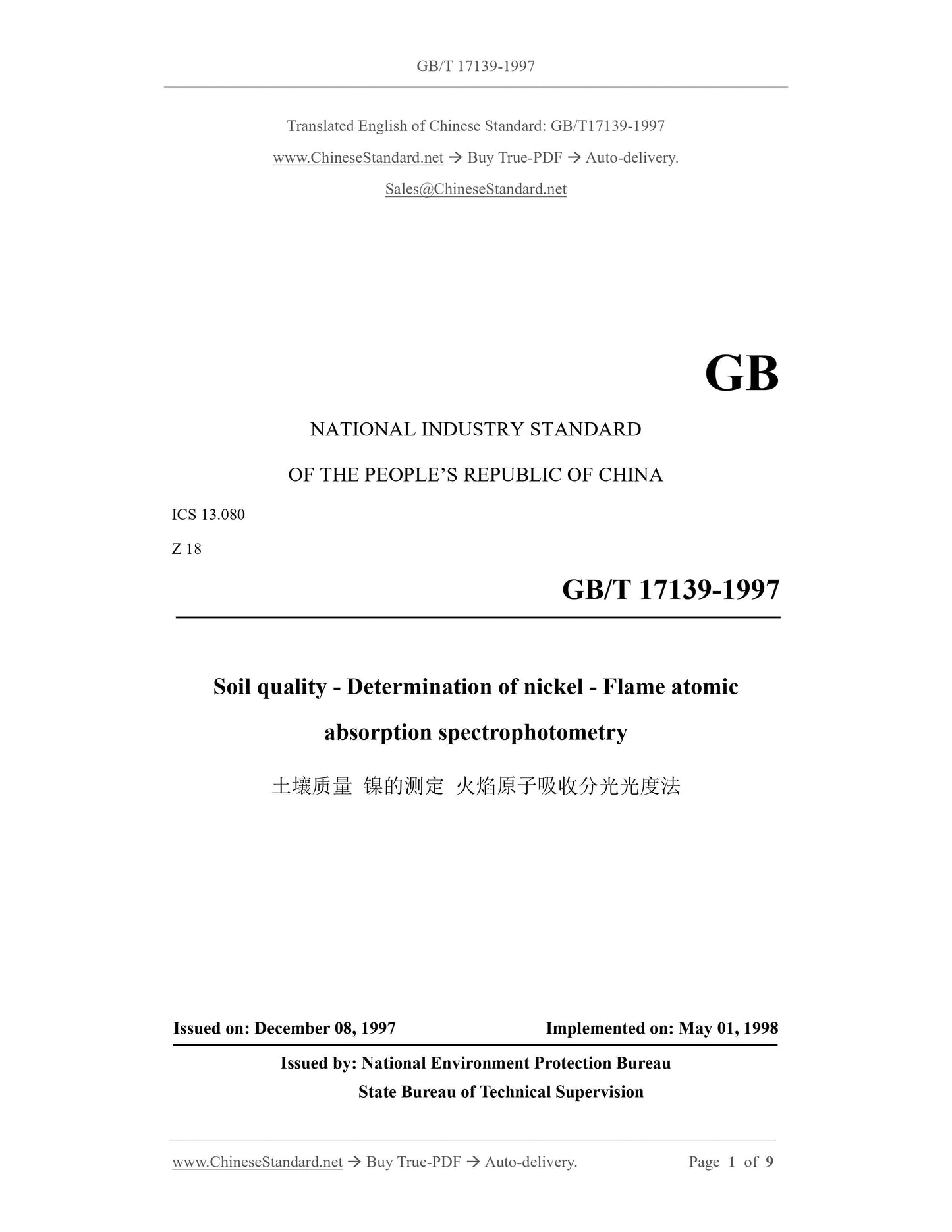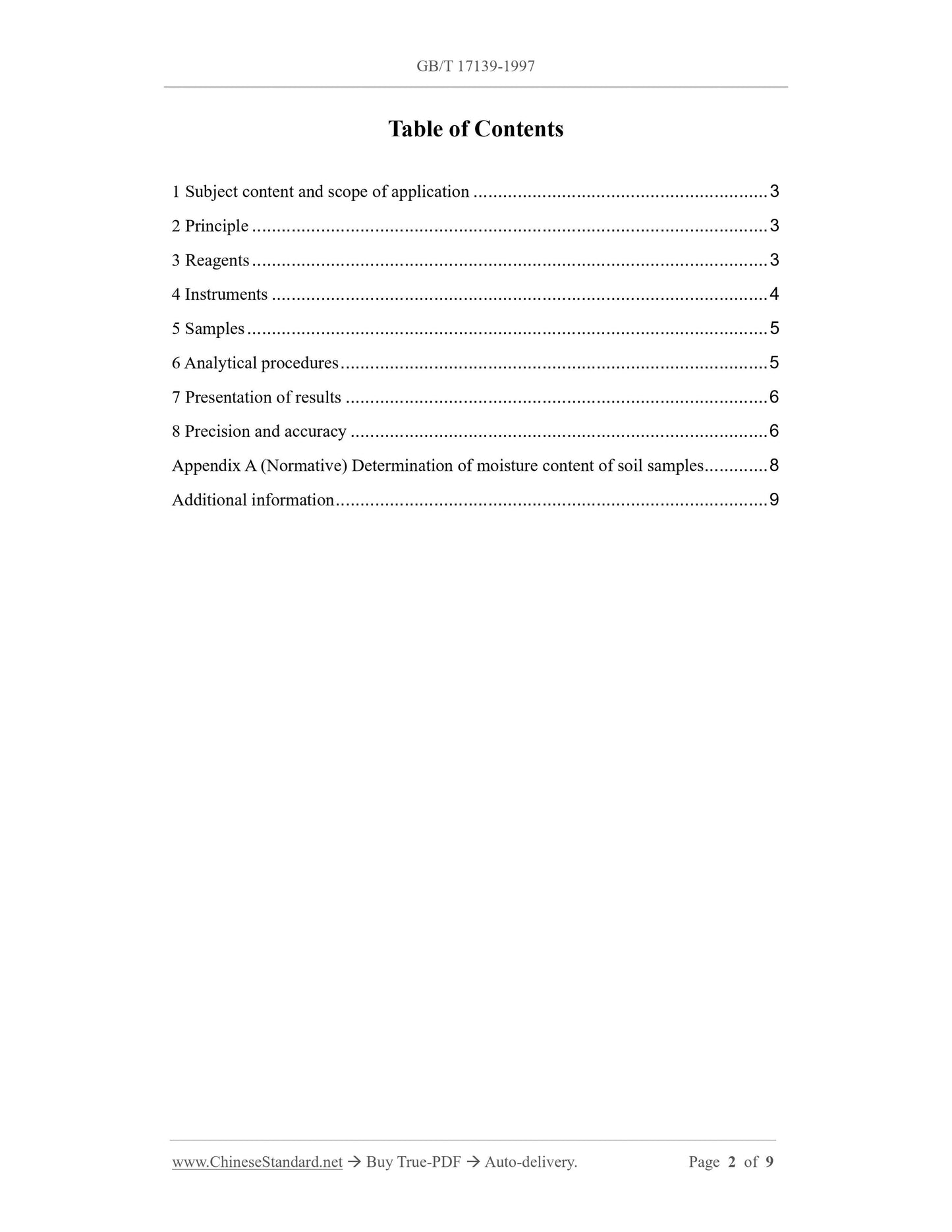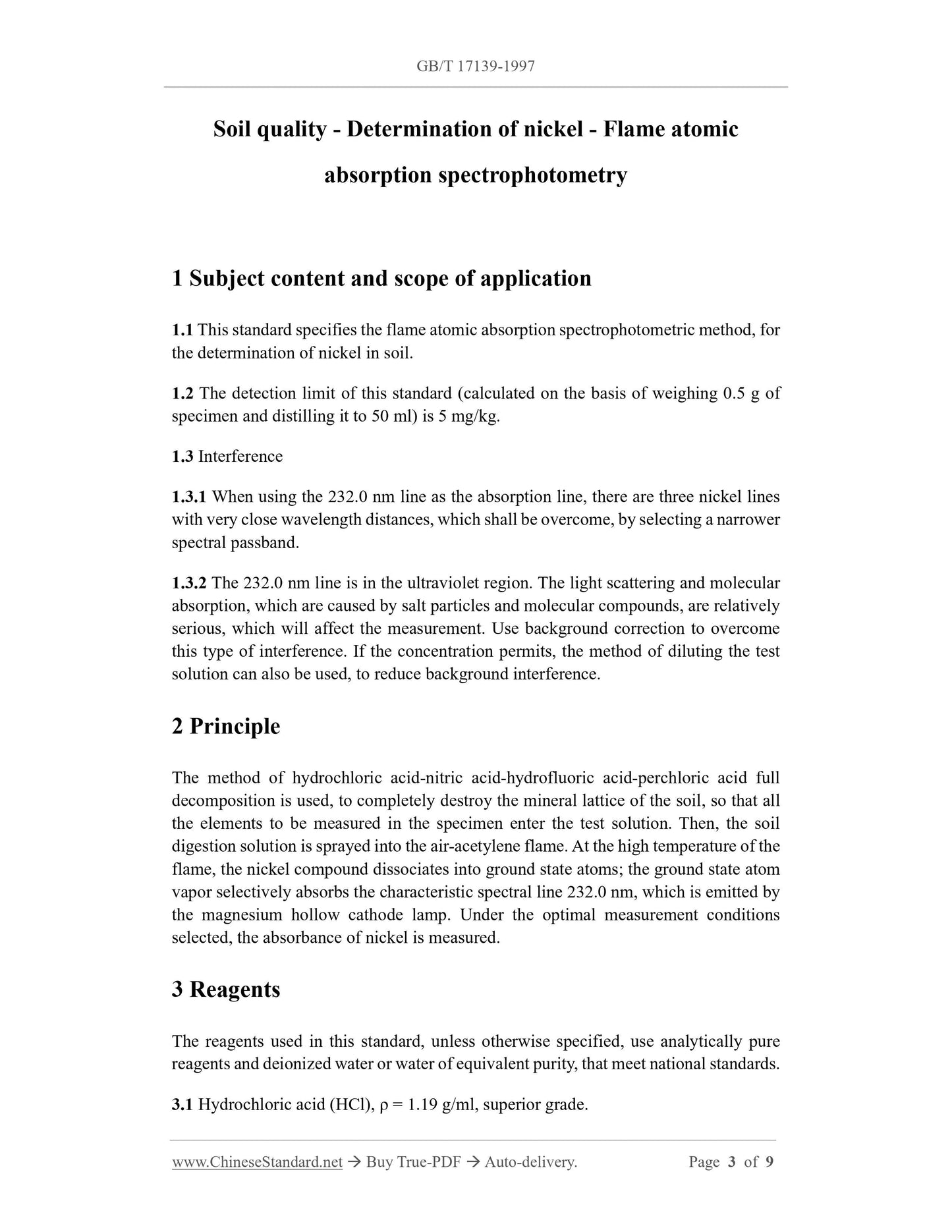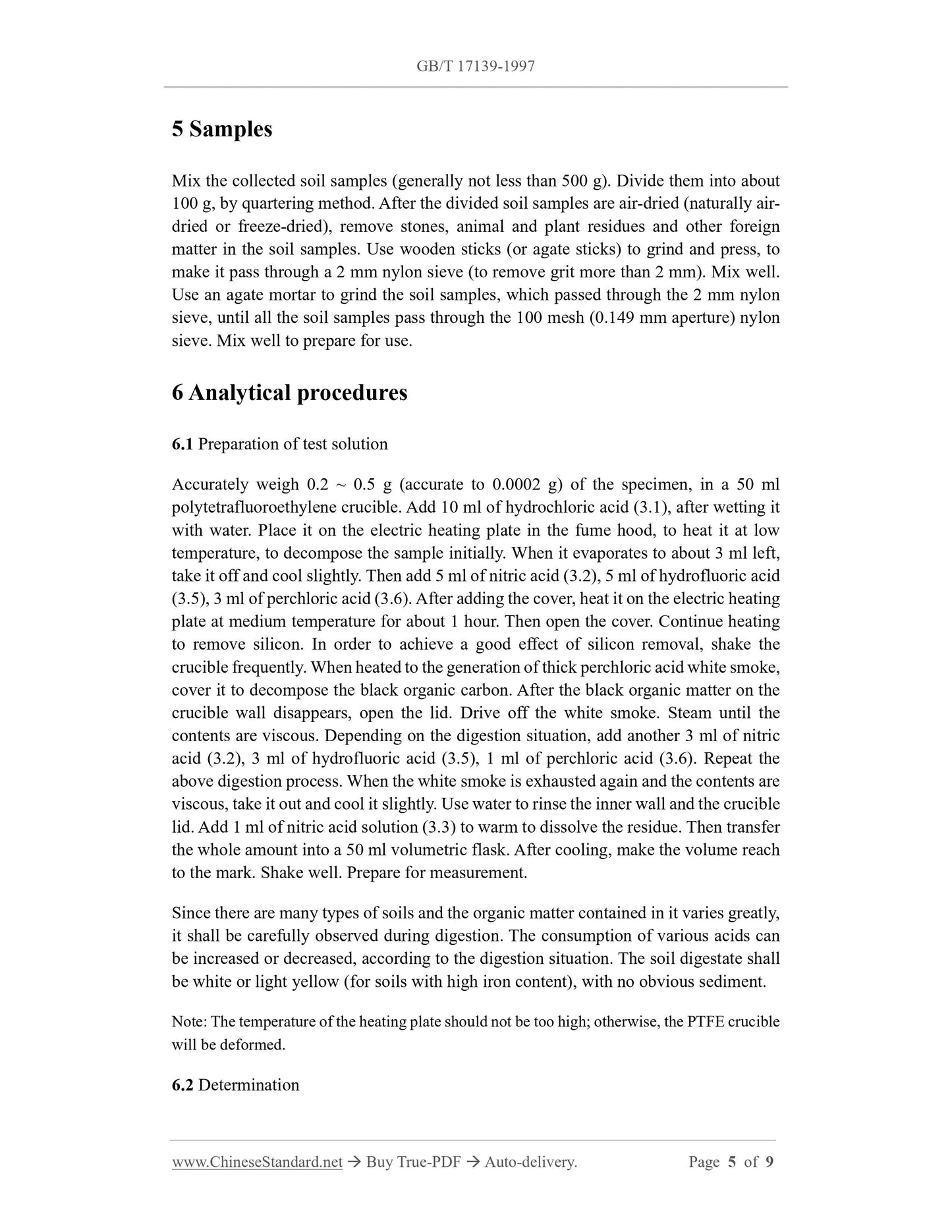1
/
of
4
www.ChineseStandard.us -- Field Test Asia Pte. Ltd.
GB/T 17139-1997 English PDF (GB/T17139-1997)
GB/T 17139-1997 English PDF (GB/T17139-1997)
Regular price
$270.00
Regular price
Sale price
$270.00
Unit price
/
per
Shipping calculated at checkout.
Couldn't load pickup availability
GB/T 17139-1997: Soil quality. Determination of nickel. Flame atomic absorption spectrophotometry
Delivery: 9 seconds. Download (and Email) true-PDF + Invoice.Get Quotation: Click GB/T 17139-1997 (Self-service in 1-minute)
Newer / historical versions: GB/T 17139-1997
Preview True-PDF
Scope
1.1 This standard specifies the flame atomic absorption spectrophotometric method, forthe determination of nickel in soil.
1.2 The detection limit of this standard (calculated on the basis of weighing 0.5 g of
specimen and distilling it to 50 ml) is 5 mg/kg.
1.3 Interference
1.3.1 When using the 232.0 nm line as the absorption line, there are three nickel lines
with very close wavelength distances, which shall be overcome, by selecting a narrower
spectral passband.
1.3.2 The 232.0 nm line is in the ultraviolet region. The light scattering and molecular
absorption, which are caused by salt particles and molecular compounds, are relatively
serious, which will affect the measurement. Use background correction to overcome
this type of interference. If the concentration permits, the method of diluting the test
solution can also be used, to reduce background interference.
Basic Data
| Standard ID | GB/T 17139-1997 (GB/T17139-1997) |
| Description (Translated English) | Soil quality. Determination of nickel. Flame atomic absorption spectrophotometry |
| Sector / Industry | National Standard (Recommended) |
| Classification of Chinese Standard | Z18 |
| Classification of International Standard | 13.08 |
| Word Count Estimation | 5,520 |
| Date of Issue | 12/8/1997 |
| Date of Implementation | 5/1/1998 |
| Summary | This standard specifies the determination of nickel in soil by flame atomic absorption spectrophotometry. The detection limit of the standard (by weighing 0. 5g sample digestion volume to 50ml computing) is 5mg/kg. |
Share







